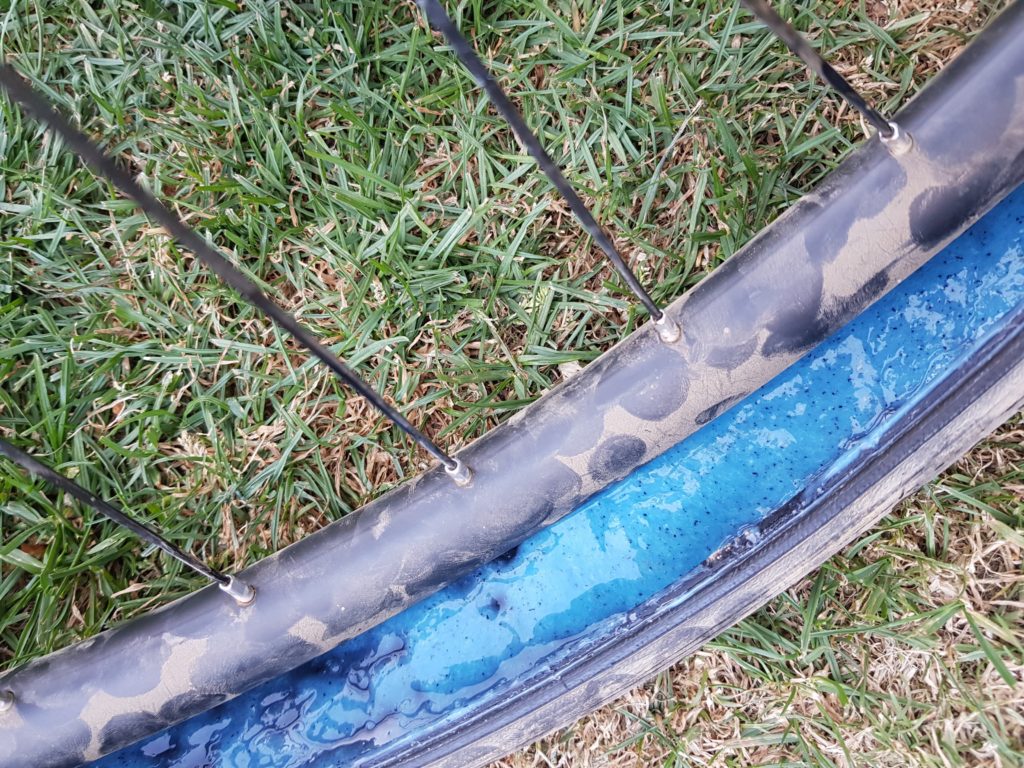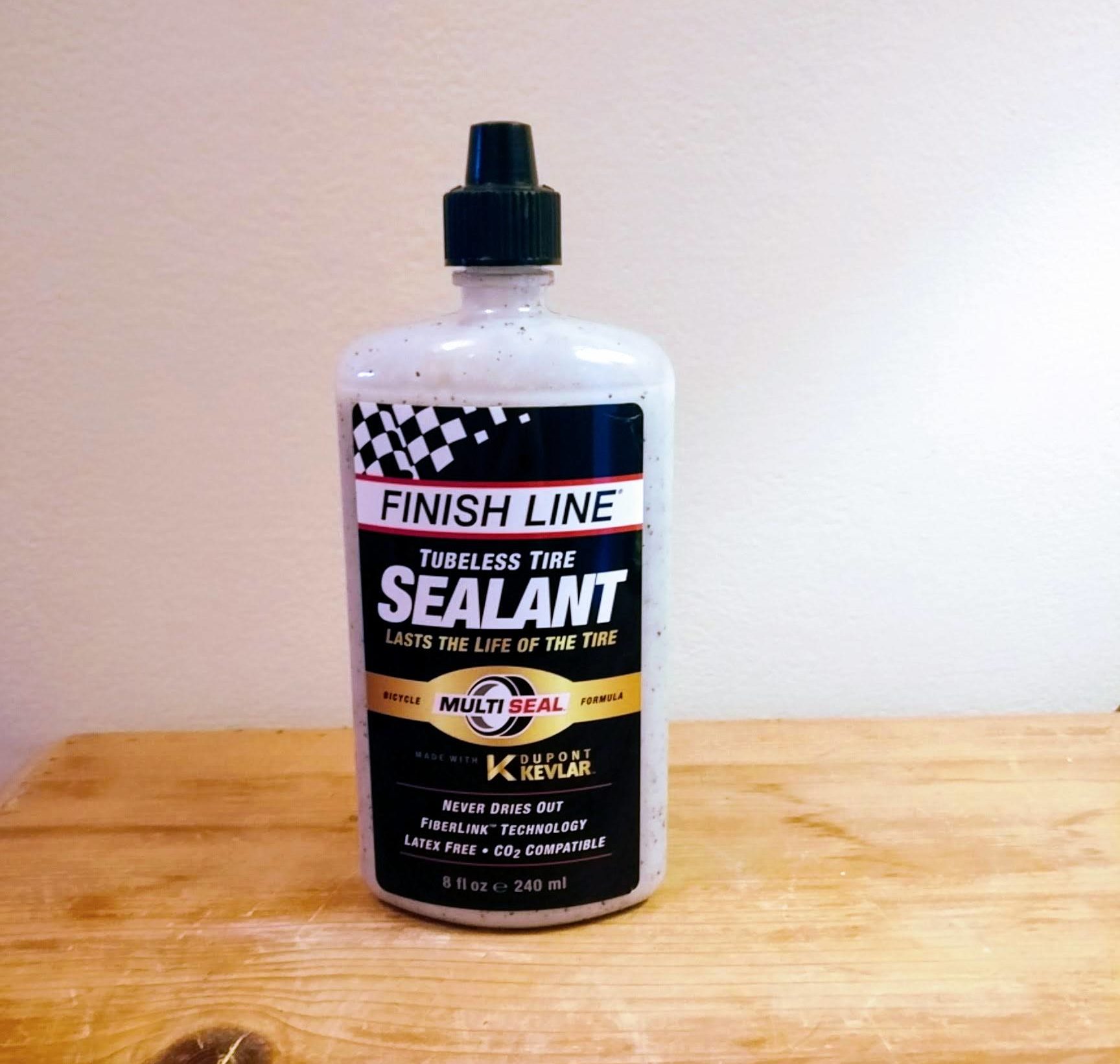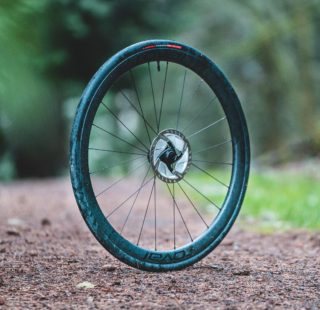A tubeless tyre sealant that they say never dries out and lasts the life of the tyre? Sounds too good to be true, so we checked it out.
Not that long ago, if you wanted to go tubeless there was only one sealant on the market; Stan’s. For many this is still the go to sealant of choice because quite simply, it works. Now there are a plethora of different brands on the market all boasting to last longer and seal quicker. What they all share in common though is a tendency to dry out usually when you need them most.
The clever technology bit…
Which is where the new Finish Line Tubeless Sealant steps in with the bold claim that it’ll never dry out and when they do, you’re left with dried clumps or sticky patches of cured latex inside your tyres. Finish Line promises to change that, along with delivering a new method of plugging leaks.
Finish Line does not use liquid latex unlike many of the other sealants on the market. Instead it uses something fancy called FiberLink, the sealant is filled with small fragments of DuPont Kevlar fibres which are forced into holes when there is a leak. When enough of those fibres are forced into the hole, they effectively congeal and plug the hole.
In the real world…
So in practice how does it fair? First impressions are that it is an incredibly thick and gloopy substance compared to the more liquid sealants I am used to and you can easily see the Kevlar fibres floating about in the gloop. Setting up a tyre is no different from any other tubeless installation so I won’t dwell on that laborious process other than to say the sample tyres, brand new Maxxis Rambler 40c, went up without any fuss and sealed first time. One 120ml bottle was used, halved between the tyres – I prefer to use a generous amount as guidelines usually fall way short.

Finish Line Tubeless Tyre Sealant and Maxxis Rambler 700x40c tyres ready for the test.
My local trails are a hot bed of thorns and sharp flints that glisten in the dusty soil like sharks teeth. Before discovering tubeless technology, swapping out innertubes was a daily occurrence on rides, so you get the idea that we’ve a good test bed for giving tyre sealants a thorough workout! Thankfully my rides were all pretty uneventful in that I never once flatted.
Back at home I noticed that the tyres were showing a lot of patches of blue sealant oozing from various parts of the tyres along with the telltale splatter of dried gunk up the rear of the seat tube that suggests something sharp and sinister had tried its best to ruin my ride.
A thorn in my side…
Closer inspection revealed a number of thorns in the rubber. This is quite normal for my area but usually doesn’t cause quite much sealant ‘seepage’ with other sealant brands. So my first thoughts are that maybe the thicker Finish Line Sealant struggles to plug holes as quickly as the liquid latex based solutions.
Tyre pressures replenished and back on with the testing…
The next big test was somewhere more rocky than the fields of Suffolk as I headed to the North Yorkshire Moors to attend the Yorkshire True Grit gravel event in Boltby. Rattling along the moorland access roads at speed is always a good test not just for bicycles but also how well your fillings are fixed as you ping off loose rocks, bounce in and out of gulleys and generally get shaken around more than one of Mr Bond’s favourite Martinis.
Air rushing out of my rear tyre rudely interrupted the fun and I could feel sealant spraying up the back of my legs. “Keep pedalling!” I thought to myself, it’ll seal up… It didn’t. Innertube time.
The hole was only small and surprised me as something of this minuscule size would normally seal within seconds. But judging by the amount of blue Finish Line slime oozing down my legs and bike, it was having a hard time plugging it. Tube fitted, I was on my way again… Psssshhhhhh! 5 miles later I was back at the side of the trail fitting another innertube, this time to the front tyre and the culprit appeared to be another small 2mm sized bite in the centreline of the tread.

Thick and gloopy, but why doesn’t it seal?
Conclusion
Both occasions when removing the tyre, there was plentiful supply of the Finish Line Tubeless Sealant sitting in the bottom of the tyre but as I’d noted during setup, it just seems to be too thick and gloopy to effectively work and struggles to seal small punctures that I’ve never had issue with when using liquid latex based sealants.
From the test I have done with one bottle of Finish Line Tubeless Sealant and a fresh set of Maxxis Rambler tyres, I can’t say I’d be rushing out to buy more of the stuff when there are more effective solutions available.
Last modified: 8th June 2019














Matches my experience. Not sealing very tiny holes even weeks after puncture, useless stuff.